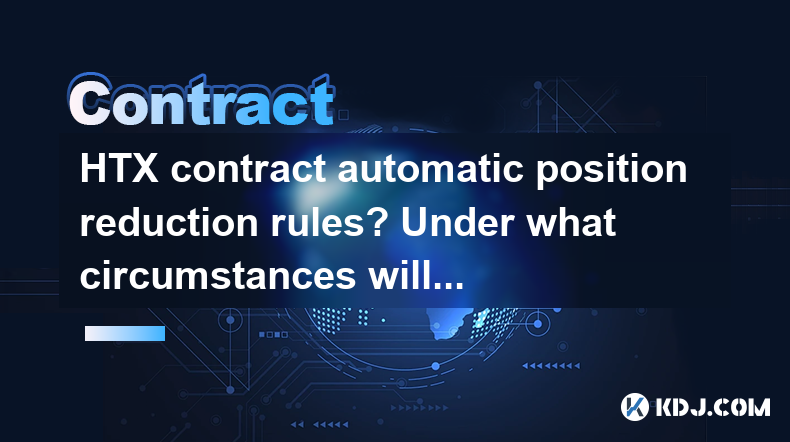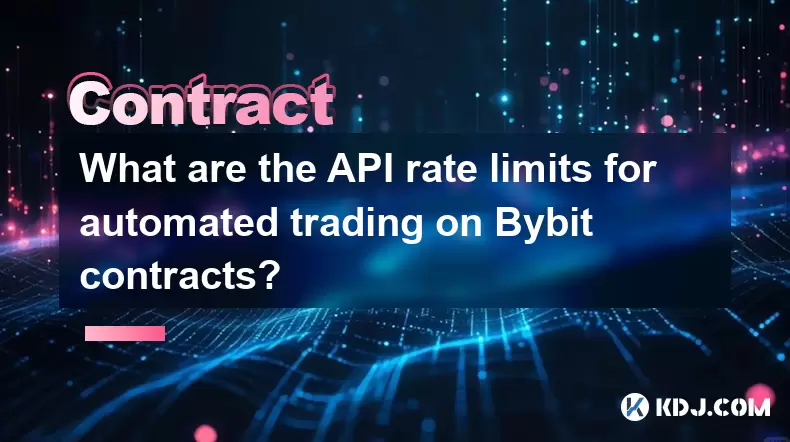-
 Bitcoin
Bitcoin $117500
2.15% -
 Ethereum
Ethereum $3911
6.19% -
 XRP
XRP $3.316
10.79% -
 Tether USDt
Tether USDt $1.000
0.01% -
 BNB
BNB $787.2
2.24% -
 Solana
Solana $175.2
4.15% -
 USDC
USDC $0.9999
0.00% -
 Dogecoin
Dogecoin $0.2225
8.40% -
 TRON
TRON $0.3383
0.28% -
 Cardano
Cardano $0.7868
6.02% -
 Stellar
Stellar $0.4382
9.34% -
 Hyperliquid
Hyperliquid $40.92
7.56% -
 Sui
Sui $3.764
7.63% -
 Chainlink
Chainlink $18.48
10.66% -
 Bitcoin Cash
Bitcoin Cash $582.1
1.88% -
 Hedera
Hedera $0.2601
6.30% -
 Avalanche
Avalanche $23.33
4.94% -
 Ethena USDe
Ethena USDe $1.001
0.02% -
 Litecoin
Litecoin $122.3
2.04% -
 UNUS SED LEO
UNUS SED LEO $8.969
-0.27% -
 Toncoin
Toncoin $3.339
0.86% -
 Shiba Inu
Shiba Inu $0.00001287
4.30% -
 Uniswap
Uniswap $10.43
7.38% -
 Polkadot
Polkadot $3.861
5.08% -
 Dai
Dai $1.000
0.02% -
 Bitget Token
Bitget Token $4.513
3.41% -
 Monero
Monero $267.7
-6.18% -
 Cronos
Cronos $0.1499
4.14% -
 Pepe
Pepe $0.00001110
5.15% -
 Aave
Aave $284.9
8.28%
HTX contract automatic position reduction rules? Under what circumstances will it be triggered?
HTX's automatic position reduction mechanism protects traders by reducing positions when margin levels fall below the maintenance threshold, ensuring account stability and risk management.
May 03, 2025 at 10:42 am

Introduction to HTX Contract Automatic Position Reduction
HTX, formerly known as Huobi, is a leading cryptocurrency exchange that offers a variety of trading services, including futures contracts. One of the key features of trading on HTX is the automatic position reduction mechanism, which is designed to manage risk and protect traders from significant losses. This article will delve into the specifics of HTX's automatic position reduction rules, explaining the circumstances under which it is triggered and how it functions.
What is Automatic Position Reduction?
Automatic position reduction is a risk management tool implemented by HTX to prevent traders from incurring excessive losses. When certain conditions are met, the system automatically reduces a trader's position to mitigate potential losses. This mechanism is crucial for maintaining the stability of the trading platform and ensuring that traders do not face unbearable financial risks.
Conditions for Triggering Automatic Position Reduction
The automatic position reduction on HTX is triggered under specific conditions. These conditions are primarily related to the margin level of a trader's account. The margin level is calculated as the ratio of the account's equity to the total margin required for the open positions. Here are the key conditions that can trigger automatic position reduction:
Margin Level Below Maintenance Margin: If a trader's margin level falls below the maintenance margin threshold, the automatic position reduction mechanism is activated. The maintenance margin is the minimum margin level required to keep positions open.
Liquidation Price Reached: If the price of the asset reaches the liquidation price set for a trader's position, the system will initiate automatic position reduction to prevent further losses.
Risk Limit Exceeded: HTX sets risk limits for each account based on the account's tier and trading volume. If a trader's position exceeds the risk limit, automatic position reduction is triggered to bring the position back within the acceptable risk parameters.
How Automatic Position Reduction Works
When the conditions for automatic position reduction are met, the HTX system follows a specific process to reduce the trader's position. Here is a detailed explanation of how this works:
Calculation of Position to Reduce: The system first calculates the amount of the position that needs to be reduced to bring the margin level back above the maintenance margin threshold or to comply with the risk limits.
Execution of Position Reduction: The system then executes the reduction of the position. This is typically done by closing part of the trader's open positions. The order of position reduction is usually based on the size of the positions, starting with the largest positions first.
Notification to the Trader: After the position reduction is completed, the trader is notified via email or through the trading platform's messaging system. This notification includes details of the positions that were reduced and the new margin level of the account.
Example of Automatic Position Reduction
To illustrate how automatic position reduction works in practice, consider the following example:
- Initial Position: A trader has an open long position of 10 BTC with a margin level of 120%.
- Price Movement: The price of BTC drops significantly, causing the margin level to fall to 90%.
- Maintenance Margin: The maintenance margin for this account is set at 100%.
- Automatic Position Reduction: Since the margin level has fallen below the maintenance margin, the system calculates that reducing the position by 2 BTC will bring the margin level back to 105%.
- Execution: The system automatically closes 2 BTC of the trader's long position, resulting in a new position of 8 BTC and a margin level of 105%.
- Notification: The trader receives a notification detailing the reduction of the position and the updated margin level.
Impact of Automatic Position Reduction on Traders
Automatic position reduction has several implications for traders on HTX. Understanding these impacts can help traders better manage their positions and mitigate risks:
Risk Management: The primary benefit of automatic position reduction is enhanced risk management. By automatically reducing positions when necessary, the system helps prevent traders from incurring significant losses.
Account Stability: Automatic position reduction contributes to the overall stability of a trader's account. It ensures that the account does not fall into a negative balance, which could lead to further complications.
Trading Strategy: Traders need to be aware of the automatic position reduction rules when planning their trading strategies. Positions that are close to the maintenance margin or risk limits may be reduced unexpectedly, affecting trading outcomes.
Emotional Impact: While automatic position reduction is a protective measure, it can still be emotionally challenging for traders to see their positions reduced without their direct intervention. Understanding the mechanism and its triggers can help traders prepare for such events.
Frequently Asked Questions
Q: Can I disable automatic position reduction on HTX?
A: No, automatic position reduction is a mandatory feature on HTX designed to protect traders and maintain the platform's stability. It cannot be disabled.
Q: How can I monitor my margin level to avoid automatic position reduction?
A: You can monitor your margin level in real-time through the HTX trading platform. Regularly check your account's equity and the total margin required for your open positions to ensure your margin level stays above the maintenance margin threshold.
Q: What happens if my position is reduced and the market then moves in my favor?
A: If the market moves in your favor after your position has been reduced, you can re-enter the market at the new price level. However, be mindful of the risk limits and ensure that your new position does not trigger another automatic position reduction.
Q: Does HTX charge any fees for automatic position reduction?
A: HTX does not charge additional fees specifically for automatic position reduction. However, standard trading fees may apply to the transactions executed during the position reduction process.
Disclaimer:info@kdj.com
The information provided is not trading advice. kdj.com does not assume any responsibility for any investments made based on the information provided in this article. Cryptocurrencies are highly volatile and it is highly recommended that you invest with caution after thorough research!
If you believe that the content used on this website infringes your copyright, please contact us immediately (info@kdj.com) and we will delete it promptly.
- FTT Token's Wild Ride: Creditor Repayments vs. Market Drop - A New Yorker's Take
- 2025-08-08 07:10:12
- Floki Crypto Price Prediction: Riding the Robinhood Rocket or Just a Meme?
- 2025-08-08 07:15:12
- EigenLayer, Restaking, and Ethereum: Navigating the Hype and the Hazards
- 2025-08-08 06:30:12
- Super Bowl 59: Jon Batiste to Jazz Up the National Anthem
- 2025-08-08 06:30:12
- Cold Wallet Crypto in 2025: The Future is Now, Ya'll
- 2025-08-08 05:10:13
- MAGACOIN, SOL, and ADA: A Tale of Shifting Tides in Crypto
- 2025-08-08 05:10:13
Related knowledge

What is the minimum deposit for OKX contracts?
Aug 08,2025 at 07:00am
Understanding OKX Contract Trading BasicsOKX is one of the leading cryptocurrency derivatives exchanges, offering a wide range of perpetual and future...

Where can I find the OKX trading calculator?
Aug 08,2025 at 07:49am
Understanding the OKX Trading Calculator FunctionalityThe OKX trading calculator is a powerful analytical tool designed to assist traders in estimatin...

Are there any fees for futures settlement on OKX?
Aug 08,2025 at 05:35am
Understanding Futures Settlement on OKXFutures settlement on OKX refers to the process by which open futures contracts are automatically closed or mar...

How to use the OKX margin calculator for futures?
Aug 08,2025 at 05:15am
Understanding the OKX Margin Calculator for FuturesThe OKX margin calculator is a specialized tool designed to assist traders in estimating the requir...

How to find and copy experienced traders on Bybit contracts?
Aug 08,2025 at 06:00am
Understanding Copy Trading on BybitBybit offers a copy trading feature that allows users to automatically replicate the contract positions of experien...

What are the API rate limits for automated trading on Bybit contracts?
Aug 08,2025 at 06:08am
Understanding API Rate Limits on BybitWhen engaging in automated trading on Bybit contracts, understanding the API rate limits is essential to prevent...

What is the minimum deposit for OKX contracts?
Aug 08,2025 at 07:00am
Understanding OKX Contract Trading BasicsOKX is one of the leading cryptocurrency derivatives exchanges, offering a wide range of perpetual and future...

Where can I find the OKX trading calculator?
Aug 08,2025 at 07:49am
Understanding the OKX Trading Calculator FunctionalityThe OKX trading calculator is a powerful analytical tool designed to assist traders in estimatin...

Are there any fees for futures settlement on OKX?
Aug 08,2025 at 05:35am
Understanding Futures Settlement on OKXFutures settlement on OKX refers to the process by which open futures contracts are automatically closed or mar...

How to use the OKX margin calculator for futures?
Aug 08,2025 at 05:15am
Understanding the OKX Margin Calculator for FuturesThe OKX margin calculator is a specialized tool designed to assist traders in estimating the requir...

How to find and copy experienced traders on Bybit contracts?
Aug 08,2025 at 06:00am
Understanding Copy Trading on BybitBybit offers a copy trading feature that allows users to automatically replicate the contract positions of experien...

What are the API rate limits for automated trading on Bybit contracts?
Aug 08,2025 at 06:08am
Understanding API Rate Limits on BybitWhen engaging in automated trading on Bybit contracts, understanding the API rate limits is essential to prevent...
See all articles

























































































